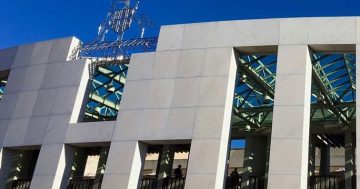
ACT facilities such as the Australian Institute of Sport are crying out for investment. Photo: File.
Has the Federal Government given up on Canberra? It would seem so based on the Federal Budget.
Government spending remains at some of the highest levels in more than 20 years. However, the ACT does not benefit. It has the lowest levels of any jurisdiction’s infrastructure spend by the Federal Government with other spending generally targeted elsewhere.
Even when considering spending comparative to population, the ACT fares poorly compared to other jurisdictions. This indicates the ACT should demand at least double and up to five times the current levels of infrastructure spending.
Perhaps Labor’s Andrew Leigh said it best: “We make up 1.6 per cent of the national population. We got 0.3 per cent of the infrastructure spend – less than a fifth of our fair share of infrastructure.”
While the ACT received less than $60 million of infrastructure investment in the Budget, the Northern Territory, with a smaller population, received $538 million.
The Northern Territory is a much larger land base than the ACT and infrastructure spend is not just about ensuring every taxpayer is getting their ‘share’ of government investment. But there are quite evident infrastructure deficiencies in the ACT that the Federal Government could, and arguably should, address.
Now is not the time to forget the capital. Earlier this year Commsec reported the ACT as the second weakest economy in the country, with low levels of consumer spending and high unemployment. The ACT places only ahead of Darwin in economic performance.
While there are signs nationally that the economy is improving (the Reserve Bank has suggested interest rates may rise as early as later this year), economic recovery can have some negative implications for Canberra.
For instance, as the economy recovers, government spending typically decreases. We can see this impact in the size of the public service following the Global Financial Crisis when the workforce reduced from 182,505 staff to 166,261 staff, or close to 10 per cent.
Given the ACT is home to about 60,000 public servants and more than 70 per cent of Canberra businesses operate in the public administration sector, a similar reduction post-COVID could see about 6000 public servants lose their jobs and more than 15,000 private sector workers in the public administration sector under pressure.
In recent times there has been criticism of the current government’s $2 million per day consultancy spend. A change to a Labor Government could see the makeup of the public sector workforce shift considerably with expertise sourced internally rather than through drawing from more than 150,000 consultants in the ACT.
While the Budget includes an overall increase in the size of the public service, these numbers are insignificant (400 staff) and these roles are spread nationally.
Most growth is in Defence and National Security, with Defence roles in particular not likely to be based in the ACT. The government has also announced a ‘reboot’ of its decentralisation plans, which would likely see public service roles leave the ACT in favour of regional areas.
And while an incoming Labor Government may remove staffing level caps for agencies, hope for public sector growth may be misguided given the pressure will be on any new government to implement a sensible economic strategy and provide a pathway back to surplus. In the past we have seen this translate to savings measures that have had proportionally greater impact on the ACT than in other states and territories.
Already we are seeing scrutiny of small areas of spending, such as furniture contracts in the Services Australia portfolio. With office space costing the Commonwealth more than $2.5 billion each year, this area of spending is sure to get attention when any government is looking for savings.
Another area of concern is the cost of living in Canberra. With an average wage of slightly more than $70,000 and the average house price now more than $1.1 million – affordability of housing is a challenge. While our unemployment levels are low, we also have a challenge attracting skilled workers. There is no doubt housing affordability plays a role in people deciding where they want to live.
There are signs Canberra businesses will have some tricky years ahead. With demand for workers declining, household debt at one of the highest levels in the world and rising interest rates, there is reason to be cautious about the ACT economy. There are also low levels of federal infrastructure spending and difficulties attracting skilled labour to Canberra – all with the backdrop of businesses closing their doors and the second weakest economy in the country.
And while spending on national institutions such as the War Memorial and the new National Aboriginal and Torres Strait Islander cultural precinct are welcome, further spending on key national infrastructure should be identified and prioritised.
Institutions such as the Australian Institute of Sport are crying out for investment. Significantly deteriorating facilities over the past 20 years have placed Australia’s future Olympic and high-performance sports outcomes in jeopardy.
Canberra already cannot host large crowds for Canberra Capitals finals matches and will not be able to host NRL or rugby games without a future stadium solution. Embarrassingly for the capital, we no longer have the right facilities to host our national teams.
The collection institutions have been seeking further funding for years – with historical items unable to be stored appropriately, endangering key artefacts and risking the preservation of Australian history.
It is time for Canberra to demand more from the Federal Government, to receive its share of national infrastructure spend, which will generate jobs and reinforce pride in our city as the national capital.





















